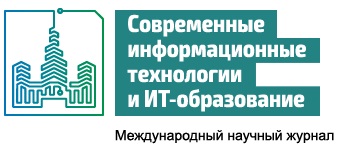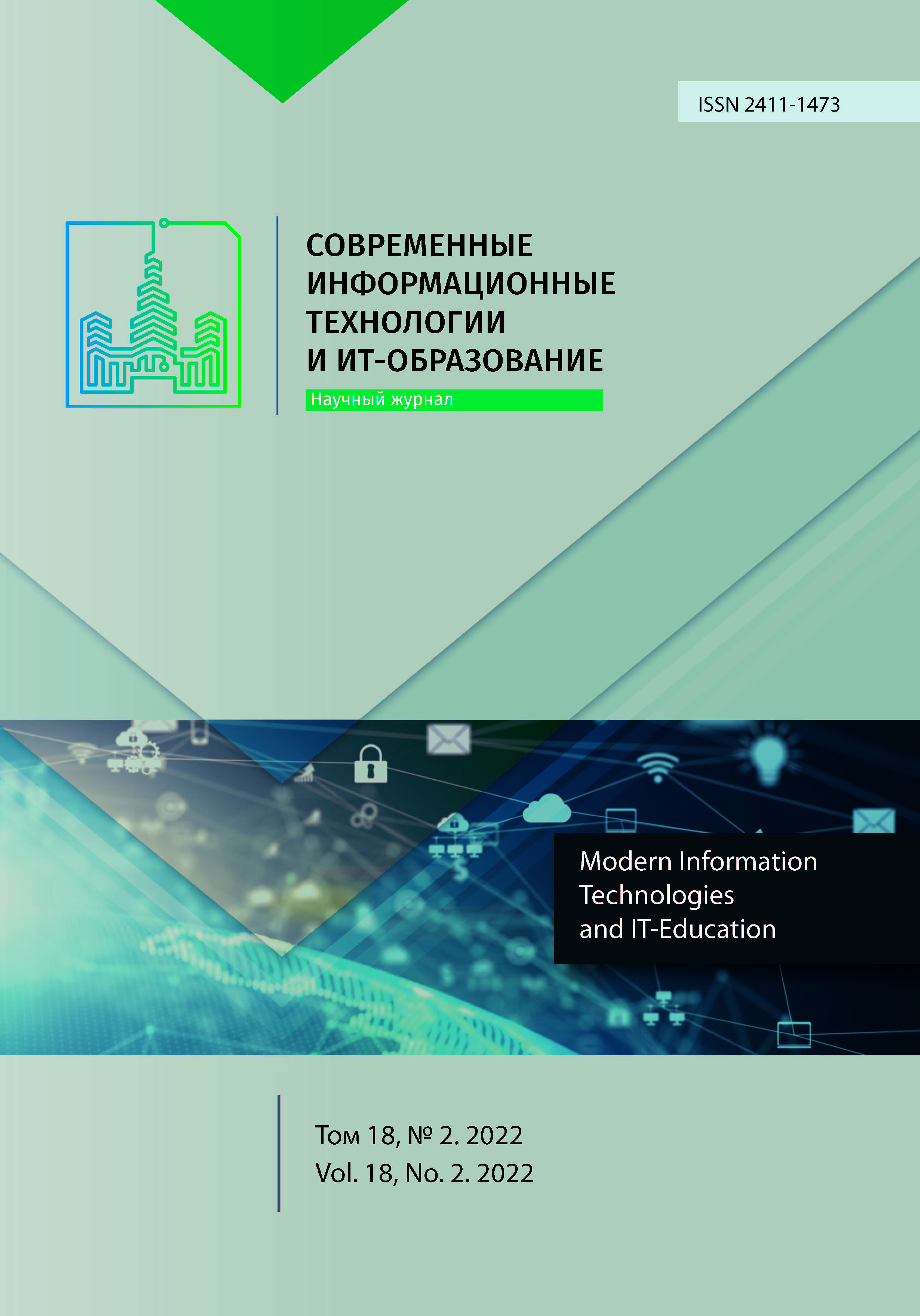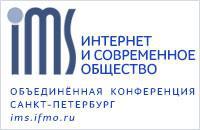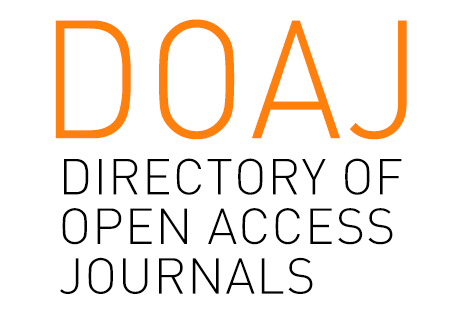Компьютерное моделирование динамики населения городского образования
Аннотация
В предлагаемой статье методами математического моделирования изучается проблема совместного сосуществования различных групп городского населения.
В простейшем случае рассматривается только взаимодействие двух групп населения внутри одной городской территории. На качественном уровне такая задача может быть описана системой двух нестационарных и нелинейных дифференциальных уравнений диффузионного типа с граничными условиями третьего рода.
Результаты проведенного численного моделирования показывают, что при соответствующем выборе коэффициентов диффузии и функций взаимодействия между различными группами населения можно получить различные сценарии динамики численности городского населения: от полного вытеснения одной группы населения другой (изначально более «агрессивной») до ситуации «мирного» совместного сосуществования.
Литература
2. Barashkova O.V. Center and Periphery in Russia: technological progress as key to achieving a more balanced national economy. Economic Revival of Russia. 2020; (2):171-179. (In Russ., abstract in Eng.) doi: https://doi.org/10.37930/1990-9780-2020-2-64-171-179
3. Danilova I.V., Rezepin A.V. Spatial economic systems: methodology and theoretical approaches to research. Vestnik Altajskoj akademii jekonomiki i prava = Journal of Altai academy of economics and law. 2021; (7-1):24-32. (In Russ., abstract in Eng.) doi: https://doi.org/10.17513/vaael.1776
4. Frisman E.Ya., Revutskaya O.L., Neverova G.P. Modelling dynamics of the limited population with age and sex structure. Matematicheskoe modelirovanie = Mathematical Models and Computer Simulations. 2010; 22(11):65-78. Available at: https://www.elibrary.ru/item.asp?id=21276428 (accessed 11.06.2022). (In Russ., abstract in Eng.)
5. Khavinson M.Yu. Control over the demographic situation in the region: socioeconomic aspect. Regional Problems. 2014; 17(2):89-92. Available at: https://www.elibrary.ru/item.asp?id=23339861 (accessed 11.06.2022). (In Russ., abstract in Eng.)
6. Khavinson M.Y., Kulakov M.P. Gravitational model of population dynamics. Vestnik Juzhno-Ural'skogo gosudarstvennogo universiteta. Serija: Matematicheskoe modelirovanie i programmirovanie = Bulletin of the South Ural State University. Series: Mathematical Modelling, Programming & Computer Software. 2017; 10(3):80-93. (In Russ., abstract in Eng.) doi: https://doi.org/10.14529/mmp170307
7. Lavrikova Yu.G., Akberdina V.V., Suvorova A.V. Coordinating the Priorities of Scientific, Technological and Spatial Development of Industrial Regions. Ekonomika regiona = Economy of region. 2019; 15(4):1022-1035. (In Russ., abstract in Eng.) doi: https://doi.org/10.17059/2019-4-5
8. Haque M.S. Globalization, State Formation, and Reinvention in Public Governance: Exploring the Linkages and Patterns in Southeast Asia. Public Organization Review. 2013; 13(4):381-396. (In Eng.) doi: https://doi.org/10.1007/s11115-013-0258-3
9. Bessa-Gomes C., Legendre S., Clobert J. Discrete two-sex models of population dynamics: On modeling the mating function. Acta Oecologica. 2010; 36(5):439-445. (In Eng.) doi: https://doi.org/10.1016/j.actao.2010.02.010
10. Revutskaya O., Neverova G., Frisman E. Complex Dynamic Modes in a Two-Sex Age-Structured Population Model. Developments in Environmental Modelling. 2012; 25:149-162. (In Eng.) doi: https://doi.org/10.1016/B978-0-444-59396-2.00010-9
11. Peaceman D.W., Rachford Jr.H.H. The Numerical Solution of Parabolic and Elliptic Differential Equations. Journal of the Society for industrial and Applied Mathematics. 1955; 3(1):28-41. (In Eng.) doi: https://doi.org/10.1137/0103003
12. Zhang W.-B. Synergetic Economics: Time and Change in Nonlinear Economics. Springer Series in Synergetics. Vol. 53. Springer-Verlag Berlin Heidelberg; 1991. 246 p. (In Eng.) doi: https://doi.org/10.1007/978-3-642-75909-3
13. Clar G., Sautter B. Research Driven Clusters at the Heart of (Trans-)Regional Learning and Priority-Setting Processes. Journal of the Knowledge Economy. 2014; 5(1):156-180. (In Eng.) doi: https://doi.org/10.1007/s13132-014-0180-0
14. Aleksandrova E., Behrens K., Kuznetsova M. Manufacturing (co)agglomeration in a transition country: Evidence from Russia. Journal of Regional Science. 2020; 60(1):88-128. (In Eng.) doi: https://doi.org/10.1111/jors.12436
15. Mortezazadeh M., Wang L.L., Albettar M., Yang S. CityFFD – City fast fluid dynamics for urban microclimate simulations on graphics processing units. Urban Climate. 2022; 41:101063. (In Eng.) doi: https://doi.org/10.1016/j.uclim.2021.101063
16. Dzerzhinsky R.I., Zausailov A.S., Vorontsov A.A. Modelling World Population Dynamics. In: Silhavy R., Silhavy P., Prokopova Z. (eds.) Data Science and Intelligent Systems. CoMeSySo 2021. Lecture Notes in Networks and Systems. Vol. 231. Springer, Cham; 2021. p. 423-432. (In Eng.) doi: https://doi.org/10.1007/978-3-030-90321-3_34
17. Hiebert K.L. An Evaluation of Mathematical Software That Solves Systems of Nonlinear Equations. ACM Transactions on Mathematical Software. 1982; 8(1):5-20. (In Eng.) doi: https://doi.org/10.1145/355984.355986
18. Aluffi-Pentini F., Parisi V., Zirilli F. A differential-equations algorithm for nonlinear equations. ACM Transactions on Mathematical Software. 1984; 10(3):299-316. (In Eng.) doi: https://doi.org/10.1145/1271.1631
19. Fuqiang D. Mining Dynamic Transition Rules of Cellular Automata in Urban Population Simulation. 2010 Second International Conference on Computer Modeling and Simulation. IEEE Computer Society; 2010. p. 471-474. (In Eng.) doi: https://doi.org/10.1109/ICCMS.2010.159
20. Singh K., Sajjad M., Ahn C. -W. Towards full scale population dynamics modelling with an agent based and micro-simulation based framework. 2015 17th International Conference on Advanced Communication Technology (ICACT). IEEE Computer Society; 2015. p. 495-501. (In Eng.) doi: https://doi.org/10.1109/ICACT.2015.7224844
21. Frisman E.Ya., Kulakov M.P., Revutskaya O.L., Zhdanova O.L., Neverova G.P. The key approaches and review of current researches on dynamics of structured and interacting populations. Computer Research and Modeling. 2019; 11(1):119-151. (In Russ., abstract in Eng.) doi: https://doi.org/10.20537/2076-7633-2019-11-1-119-151
22. Petrov L.F. Non-linear models in economic and social research. Vestnik of the Plekhanov Russian University of Economics. 2022; 19(4):23-31. (In Russ., abstract in Eng.) doi: https://doi.org/10.21686/2413-2829-2022-4-23-31
23. Kiselev D.O. Computational aspects of solving the problem of interaction of population groups in urban education. Computational nanotechnology. 2019; 6(2):48-52. (In Russ., abstract in Eng.) doi: https://doi.org/10.33693/2313-223X-2019-6-2-48-52
24. Purvis B., Mao Y., Robinson D. Entropy and its Application to Urban Systems. Entropy. 2019; 21(1):56. (In Eng.) doi: https://doi.org/10.3390/e21010056
25. Guichard F., Gouhier T.C. Non-equilibrium spatial dynamics of ecosystems. Mathematical Biosciences. 2014; 255:1-10. In Eng.) doi: https://doi.org/10.1016/j.mbs.2014.06.013

Это произведение доступно по лицензии Creative Commons «Attribution» («Атрибуция») 4.0 Всемирная.
Редакционная политика журнала основывается на традиционных этических принципах российской научной периодики и строится с учетом этических норм работы редакторов и издателей, закрепленных в Кодексе поведения и руководящих принципах наилучшей практики для редактора журнала (Code of Conduct and Best Practice Guidelines for Journal Editors) и Кодексе поведения для издателя журнала (Code of Conduct for Journal Publishers), разработанных Комитетом по публикационной этике - Committee on Publication Ethics (COPE). В процессе издательской деятельности редколлегия журнала руководствуется международными правилами охраны авторского права, нормами действующего законодательства РФ, международными издательскими стандартами и обязательной ссылке на первоисточник.
Журнал позволяет авторам сохранять авторское право без ограничений. Журнал позволяет авторам сохранить права на публикацию без ограничений.
Издательская политика в области авторского права и архивирования определяются «зеленым цветом» в базе данных SHERPA/RoMEO.
Все статьи распространяются на условиях лицензии Creative Commons «Attribution» («Атрибуция») 4.0 Всемирная, которая позволяет другим использовать, распространять, дополнять эту работу с обязательной ссылкой на оригинальную работу и публикацию в этом журналe.













